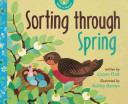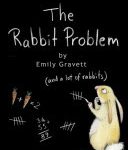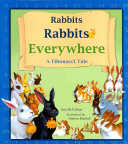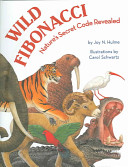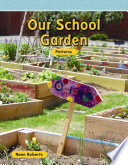Listed below are selected teacher resources, picture books, and non-fiction related to patterning and algebra.
Teacher Resources
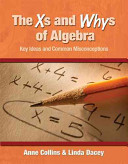 The Xs and whys of algebra: Key ideas and misconceptions
The Xs and whys of algebra: Key ideas and misconceptions
by Anne Collins and Linda Dacey
Grades: 7-9
This flipchart emphasizes five essential algebraic concepts: using variables meaningfully; using multiple representations for expressions; connecting algebra with number; connecting algebra with geometry; and manipulating symbols with understanding. The thirty research-based modules are designed to engage all students in mathematical learning that develops conceptual understanding, addresses common misconceptions, and builds key ideas essential to future learning.
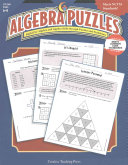 Algebra puzzles: Build pre-algebra and algebra skills through puzzles and problems
Algebra puzzles: Build pre-algebra and algebra skills through puzzles and problems
by Hank Garcia
Grades: 7-9
The author uses games, puzzles, and other problem-solving activities to give students fresh, new ways of exploring learned concepts. While reviewing essential concepts and vocabulary for pre-algebra and algebra, the book helps students visualize and think more deeply about these abstract ideas.
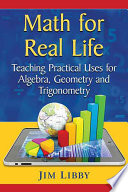 Math for real life: Teaching practical uses for algebra, geometry and trigonometry
Math for real life: Teaching practical uses for algebra, geometry and trigonometry
by Jim Libby
Grades: 7-12
This book presents hundreds of practical applications for mathematics—from baseball statistics to the theory of relativity—that can be understood by anyone with a knowledge of high school algebra, geometry and trigonometry. It will help teachers to answer the inevitable question “When are we ever going to use this?”
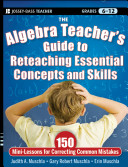 The algebra teacher’s guide to reteaching essential concepts and skills: 150 minilessons for correcting common mistakes
The algebra teacher’s guide to reteaching essential concepts and skills: 150 minilessons for correcting common mistakes
by Judith A. Muschla et al.
Grades: 6-12
In simple terms, the authors outline 150 classroom-tested lessons, focused on those concepts often most difficult to understand, in terms that are designed to help all students unravel the mysteries of algebra. Also included are reproducible worksheets that will assist teachers in reviewing and reinforcing algebra concepts and key skills.
 Jumpstart! Maths: Maths activities and games for ages 5-14
Jumpstart! Maths: Maths activities and games for ages 5-14
by John Taylor
Grades: K-8
The author presents a collection of simple-to-use, multi-sensory games and activities which will jumpstart students’ understanding of mathematics in action. It will help students to explore and learn math both through technology and without, in an atmosphere of fun, mutual support and tolerance. Topics include number and place value, fractions, ratios, algebra, measurement, geometry, and more. (E-book only)
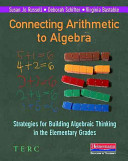 Connecting arithmetic to algebra: Strategies for building algebraic thinking in the elementary grades
Connecting arithmetic to algebra: Strategies for building algebraic thinking in the elementary grades
by Susan Jo Russell et al.
Grades: K-6
This book explores how elementary school teachers can better prepare their students for algebra. The authors describe how elementary teachers can shape their instruction so that students learn to notice and describe consistencies across problems, articulate generalizations about the behavior of the operations, and develop mathematical arguments based on representations to explain why such generalizations are or are not true. All of these form the basis of strategies used in algebra.
 Algebra and the elementary classroom: Transforming thinking, transforming practice
Algebra and the elementary classroom: Transforming thinking, transforming practice
by Maria L. Blanton
Grades: K-6
This book demonstrates how prepare students for formal algebra instruction by introducing algebraic thinking through familiar arithmetical contexts; helping students think about, represent, and build arguments for their mathematical ideas; exploring mathematical structures and functional relationships, and asking students to make algebraic connections across the curriculum.
 Drying salmon: Journeys into proportional and pre-algebraic thinking
Drying salmon: Journeys into proportional and pre-algebraic thinking
by Barbara L. Adams and Jerry Lipka
Grades: 6-7
This module explores pre-algebraic and proportional thinking using the unique system of body measures that a Yup’ik elder used when hanging her salmon to dry. Students transform their own measurements into mathematical symbols as a way to investigate variables, relationships, proportions and algebraic thinking. Part of the Math in a cultural context series.
 Bridging the gap between arithmetic and algebra
Bridging the gap between arithmetic and algebra
edited by Bradley S. Witzel
Grades: K-12
The abstractness of algebra and missing precursor understandings may be overwhelming to many students, and their teachers. This book responds to this need for instruction and interventions that go beyond typical math lesson plans. Providing a review of evidence-based practices, this book is an essential reference for teachers when teaching mathematics to students who struggle with the critical concepts and skills necessary for success in algebra.
 Mindset mathematics: Visualizing and investigating big ideas, grade 7
Mindset mathematics: Visualizing and investigating big ideas, grade 7
by Jo Boaler et al.
Grades: 7
The most challenging parts of teaching mathematics are engaging students and helping them understand the connections between mathematics concepts. The authors designed this book around the principle of active student engagement, with tasks that reflect the latest brain science on learning. Open, creative, and visual math tasks have been shown to improve student test scores, and more importantly change their relationship with mathematics and start believing in their own potential.
Picture Books
written by Lizann Flatt, illustrated by Ashley Barron
What if animals and plants knew math, just like us? Would flowers bloom in patterns? Would raindrops fall in rhythm? Would birds balance evenly on branches? In this book, nature comes to life to help children grasp concepts of patterning, sorting, data management, and probability.
 Growing patterns: Fibonacci numbers in nature
Growing patterns: Fibonacci numbers in nature
written by Sarah C. Campbell, illustrated by Sarah C. Campbell and Richard P. Campbell
What’s the biggest mathematical mystery in nature? Fibonacci numbers! The pattern creeps up in the most unexpected places. It’s clear that math holds secrets to nature and that nature holds secret numbers.
 Mysterious patterns: Finding fractals in nature
Mysterious patterns: Finding fractals in nature
written by Sarah C. Campbell, illustrated by Sarah C. Campbell and Richard P. Campbell
Nature’s repeating patterns, better known as fractals, are beautiful, universal, and explain much about how things grow. This book is an introduction to fractals through examples that can be seen in parks, rivers, and our very own backyards.
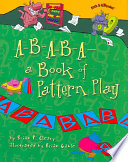 A-b-a-b-a: A book of pattern play
A-b-a-b-a: A book of pattern play
written by Brian P. Cleary, illustrated by Brian Gable
The pictures and rhyming text in this book provide simple examples of repeating sequences of shapes, colours, objects, and more, helping readers learn how to find patterns in the world around them.
by Emily Gravett
In Fibonacci’s Field, Lonely and Chalk Rabbit meet, snuggle together, and then spend a year trying to cope with their ever-increasing brood and the seasonal changes that bring a new challenge each month. By the end of the book, you’ll know how 1+1 can add up to 288.
written by Ann McCallum, illustrated by Gideon Kendall
Rapidly multiplying rabbits are taking over the village of Chee, and soon there are so many that even the Pied Piper cannot get rid of them. A girl named Amanda discovers a pattern that leads to a way to make the rabbits leave.
written by Joy N. Hulme, illustrated by Carol Schwartz
Count the petals on a flower or the peas in a peapod. The numbers are all part of the Fibonacci sequence. In this book, readers will discover this mysterious code in a special shape called an equiangular spiral, which appears throughout nature. A sundial shell curves to fit the spiral; so does a parrot’s beak, a hawk’s talon, and even our own human teeth.
Non-Fiction
by Rann Roberts
Grades: 2-5
The students in this book are learning about gardens. One grade is planting a pizza garden, and another grade is planting a storybook garden. Although they are planting different things, they will all use patterns in their planning. With photos, math charts and diagrams, and informational text features, students will learn about practical, real-world applications of math skills as they learn about mathematical patterns and build their STEM skills.
 Real world algebra: Understanding the power of mathematics
Real world algebra: Understanding the power of mathematics
by Edward Zaccaro
Grades: 5-9
Just as English can be translated into other languages, word problems can be “translated” into the math language of algebra and easily solved. This book explains this process in an easy to understand format using cartoons and drawings, making self-learning easy for both the student and any teacher who never did quite understand algebra. Includes chapters on algebra and money, algebra and geometry, algebra and physics, algebra and levers and many more.
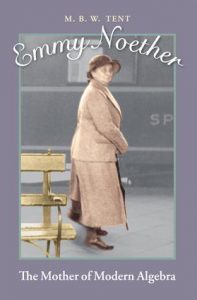 Emmy Noether: The mother of modern algebra
Emmy Noether: The mother of modern algebra
by M. B. W. Tent
Grades: 8-12
This book, written primarily for the young adult reader, tells the life story of Emmy Noether, the most important female mathematician of our time. Because no one expected her to grow into an important scientist, the records of her early life are sketchy. After all, it was assumed that she would grow up to be a wife and mother. Instead, she was a genius who chose a distinctive path. (E-book only)
Finding More Resources
To find more resources in this area, try the following:
- Search using the General tab on the UBC Library website to look for material in all UBC Library branches.
- Search using “Search Education Resources” box in the left hand bar on the Education Library website to limit your results to materials in the Education Library.
- Use specific search terms to narrow your results, such as “mathematics – study and teaching”, “mathematical ability – testing”, “algebra – study and teaching”, or “mathematics – juvenile literature”.
- To find lesson plans, include “lesson plans”, “lesson planning”, or “activity programs” in your search terms.
For more help with searching, please visit the Library Service Desk or e-mail ed.lib@ubc.ca.
